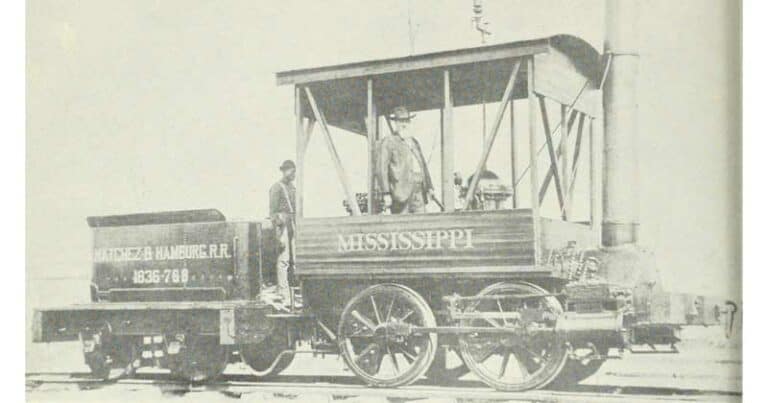Texas & Pacific #400, Hired to Swim!
The rapid move to dieselize the railroads ended the careers of most steam locomotives in the United States; but one locomotive, Texas & Pacific #400, actually had its revenue career extended! Diesels on the T&P ran into a specific issue that needed a rescue by steam. Now retired in Marshall, Texas, T&P #400 stands as reminder of the power of steam locomotives.

Early Years as #410
Built by Baldwin Locomotive Works in 1915, the 2-8-2 (Mikado type) steam locomotive first operated on the Fort Worth & Denver City (FW&DC) Railway where it was assigned #410. The #410 was the final locomotive built in the the E-4A1 class, which served as FW&DC’s initial use of oil burning locomotives.
The E-4A1 class proved to be extremely valuable for the FW&DC, leading the locomotives to remain active well into the 1950s. The locomotive received several upgrades throughout her service years which included increasing her oil capacity and a steel cab to replace her original wooden one.
#410 served the FW&DC until 1958. She appeared destined for the scrappers line with the rest of the locomotives in her class, but she would receive a pardon via the Texas and Pacific Railroad.

Hired to “Swim”
The Texas & Pacific (T&P) Railway, a nearby competitor to the FW&DC, made news in the early 1950s as one of the first railroads in the United States to fully dieselize; but, although ahead of its time in many ways, this decision had one major flaw- it left the railroad unable to handle flooded tracks. Diesel locomotives at the time had electrical equipment on the bottom of their frames and the flood waters led to their traction motors stalling.
In 1957, the T&P Railway leased a steam locomotive from the FW&DC to handle assist in operations where tracks were flooded along the Red River. The lease proved to be so successful that the T&P purchased #410 the following year.
How Many Cars? How Deep Was the Water?
After undergoing a cosmetic restoration that included renumbering to #400, the new T&P #400 made her debut for the railroad in May 1958 and did not take long to impress, with records indicating that she pulled a train of 125 cars on May 12th of that year. Though she would experience frequent engine stalling, the locomotive pulled trains through flood waters that exceeded three feet in many places.
Nicknamed the “Moccasin”, T&P #400 would be a valuable asset for the railroad over the next five years. Her size and power allowed the locomotive to pull as many as 159 cars at a time through flood waters. But in 1963, #400 received her proverbial pink slip as the T&P retired her from revenue service.
Standing Watch over Marshall
Following her retirement, Texas & Pacific wanted to preserve the sole surviving E-4A1 and elected to donate #400 to the City of Marshall, Texas, where the railroad was headquartered. The railroad gave the locomotive a cosmetic restoration including a new paint job before the locomotive was placed on static display at Marshall City Park.
T&P #400 would remain on display at the park for the next 45 years. For the majority of that time, the locomotive sat outside where she was subjected to the elements and regular vandalism. When the locomotive finally got a shed, it was to protect the public from asbestos (which was subsequently removed).

#400 Gets the Museum Treatment
For a time, it appeared that T&P #400 was destined to rust away with her legacy fading away in the process. But in 2008, Moccasin was moved to Marshall Station, home to the Texas & Pacific Railway Depot and Museum.
Over the next couple of years, T&P #400 went through a much needed cosmetic restoration to remove the rust and graffiti she had acquired thanks to years of neglect, as well as some safety improvements to ensure the super-senior would be able to handle visitors. Once the restoration process was finished, the locomotive was placed on static display outside of the station, which is home to both the museum as well as an active Amtrak station.
In 2015, the museum hosted a special 100th birthday celebration for the locomotive; an event that would not have occurred, at least not to the same extent, if the locomotive had not been saved nearly a decade earlier.
Today the Moccasin remains on display outside of the Marshall Depot, ready to greet passengers and railfans of all ages. To learn more about the iconic locomotive or the T&P Railway Museum, including location, hours, roster and more, be sure to visit the Texas & Pacific Railway Museum website.
Texas & Pacific was known for their use of larger locomotives. One of their most famous surviving locomotives is T&P #610, a massive 2-10-4 “Texas” type locomotive that calls the Texas State Railroad Museum home in retirement.







